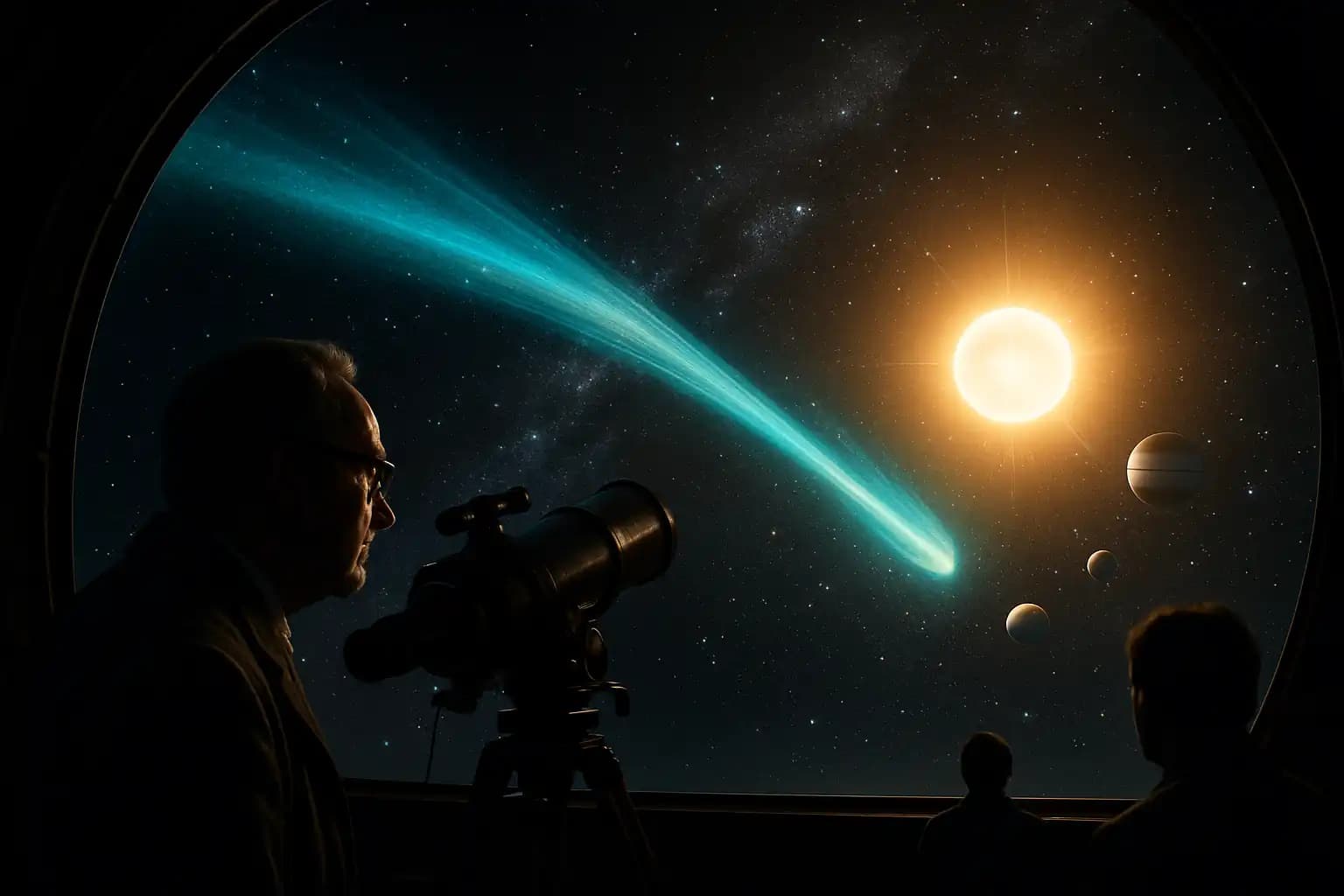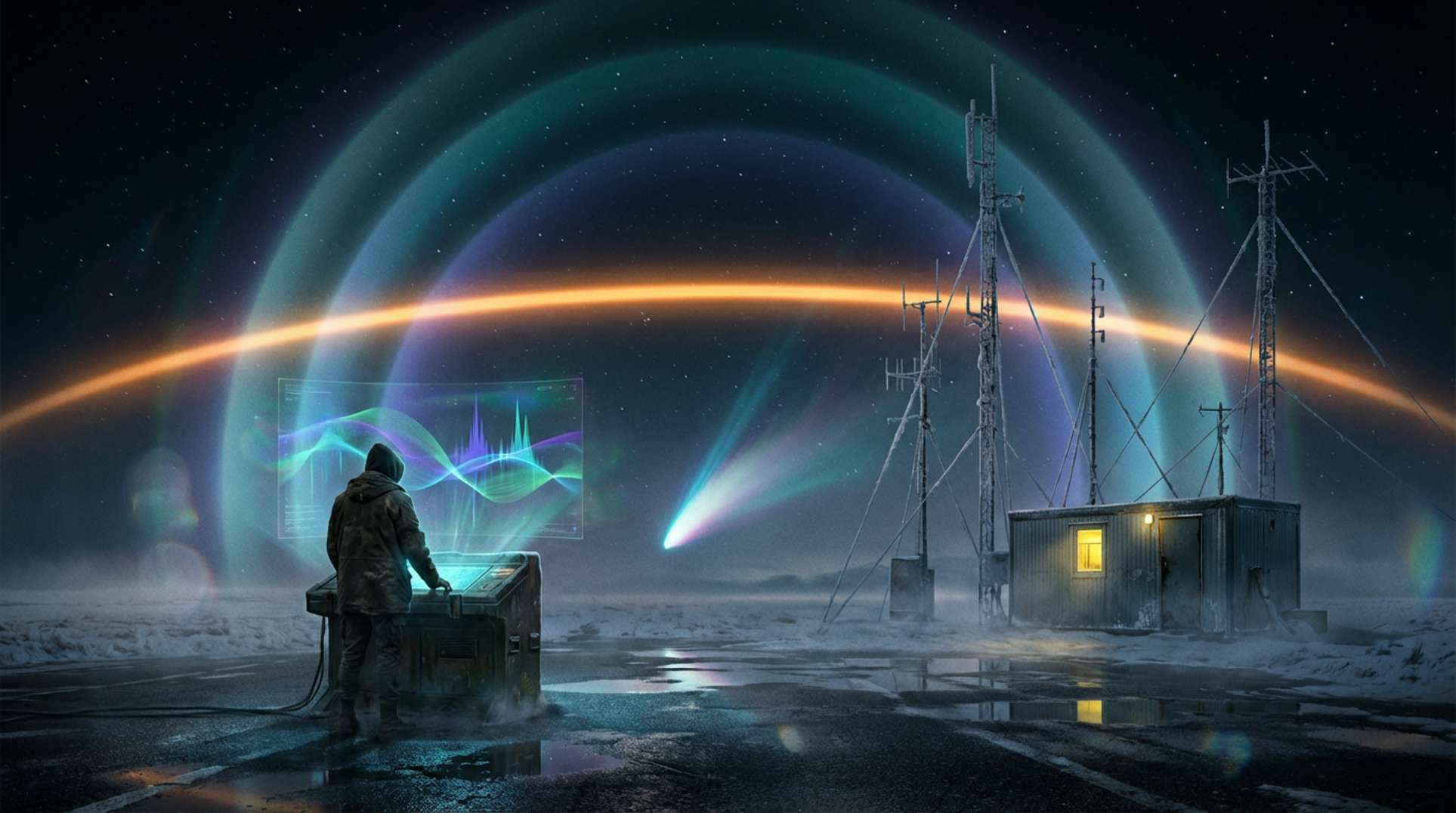The solar system is poised for an extraordinary astronomical event: 3I/ATLAS, an interstellar comet, approaches the Sun and heads for a “galactic alignment.” This excitement has sky-watchers, scientists, and theorists buzzing. Discovered in July 2025, 3I/ATLAS is just the third known interstellar object. Its every move is now under intense international scrutiny (LiveNOW from FOX). As it glides behind the Sun, many wonder what energetic surprises it might unleash during this unique planetary choreography.
3I/ATLAS: Current Trajectory and the Science of Close Solar Encounters
NASA confirms that 3I/ATLAS reached perihelion on October 29, 2025, passing at 1.36 AU, well outside Earth’s orbit (official NASA and ephemeris records). Tracking of the comet is intensive, yet it poses no threat to Earth; its path intersects a dense region of Mercury, Venus, Earth, Mars, and Jupiter during a rare planetary alignment. Hubble observations reveal a teardrop-shaped dust cocoon and a fast, hyperbolic escape trajectory from the solar system. While some, like Harvard’s Avi Loeb, speculate about artificial origins, planetary scientists focus on outgassing, nickel signatures, and its potential as a sample from distant star systems. For a quick breakdown of 3I/ATLAS’s chemistry and monitoring, see this investigative update.
The Oberth Maneuver and Alien Hypotheses: Science, Speculation, and What to Watch
The ‘Oberth maneuver’ has sparked debate about whether 3I/ATLAS could alter its trajectory using energy from the Sun. The Oberth effect explains why any spacecraft—alien or human—would maximize engine burns at perihelion for the best velocity boost (mechanics explained in astronautics). While leading astronomers classify 3I/ATLAS as a natural comet, the “alien mothership” theory persists: Avi Loeb argues that perihelion presents a “black swan” opportunity for a spacecraft to reveal itself via such a maneuver (IFLScience). To date, there’s no evidence of non-natural propulsion, but this moment remains a litmus test for anomalies—if they exist.
Open-minded skepticism prevails, combining data analysis and scientific scrutiny, as researchers emphasize in this crossroads-of-disclosure feature.
Galactic Alignment: Planetary Choreography and Energetic Speculation
What about the historic alignment? In 2025, Jupiter, Earth, the Sun, Mercury, Venus, and Mars will cluster unusually closely along the ecliptic, with 3I/ATLAS threading this needle in the solar system. While planetary alignments lack the gravity to trigger earthquakes or solar flares, they captivate astronomers and astrologers alike. Astrophysicists assert that alignments are visually stunning rather than dynamically disruptive. Many spiritual and “energy shift” commentators ascribe special significance to these rare configurations (Medium). In reality, these alignments sometimes coincide with heightened solar activity or unusual geomagnetic events—but correlation is not causation. Ongoing research, including updates published in solar and magnetic cycle reviews, grounds theories in observable data.
Meanwhile, the conjunction of planets with an interstellar object provides a valuable natural experiment—one closely monitored by ground and space-based observatories across the globe. The interplay of cosmic samples, solar wind, and planetary gravity is not merely a spectacle; it serves as a laboratory for interplanetary science, as discussed in planetary defense updates.
Why 3I/ATLAS Matters: Cosmic Rarities, Public Fascination, and Scientific Vigilance
The stir around 3I/ATLAS shows our enduring fascination with the unknown. This blend of observation, speculation, and online myth-making captivates the public. Whether viewed as an omen, alien probe, or spectacular comet, interstellar visitors offer unique research opportunities. Science encourages skepticism but also openness; spectacular events often yield unexpected insights. For broader context on how anomalies shape public discourse and policy—from planetary alignments to political preparedness—see in-depth reporting on government emergency cycles or the cultural echo chamber analyzed in this AI failure chronicle.
Whether 3I/ATLAS’s passage marks a mere chapter in cosmic history or sparks future headlines, it highlights both the limits and promises of current science. For continuous updates that differentiate signal from noise in the planetary anomaly landscape, follow trusted sources like Unexplained.co.





